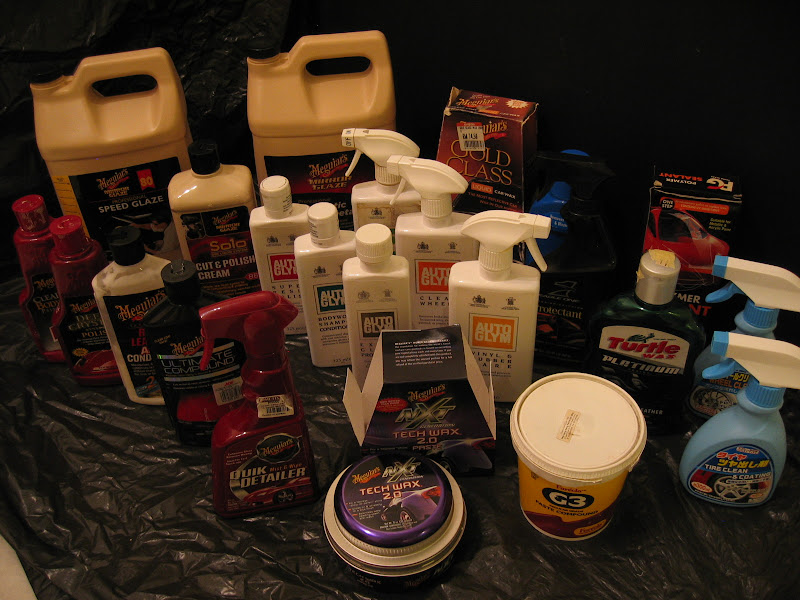How often have you heard, “Oh, the rain will wash the car for me” or “Why bother washing when it will get dirty again?”
Well, we believe that caring for your car’s paintwork is as important as regular servicing. Our car’s engine oil needs to be changed periodically, did you also know that our car’s paintwork have to be waxed periodically?
New engine oil has better lubricating and protective qualities. So does a new coat of wax, periodic polishing and waxing not only helps to maintain a healthy shine on the paint, it also prevents the need for a costly respray in the future.
Today’s event will demonstrate to you the five basic steps of paint care that can be easily practiced by anyone!
Five Steps of Paint Care
Step 1: Washing

Washing the car removes loose contaminants from the paint such as road grime, traffic film and bird droppings.
It is best to use a pH-Neutral car shampoo as it will not harm the paint and is also gentle on waxes.
Using a wash mitt instead of a sponge or a cloth creates a buffer zone to prevent dirt and grit from scratching the paint during the wash.
Wash at least once a week to prevent contaminants and dirt from bonding to the paint which will require paint claying and polishing to remove.
Step 2: Claying

After removing the loose contaminants on top of the paint’s surface, it is time to remove contaminants IN the paint surface. These are contaminants that have bonded to the paint and cannot be removed by washing alone.
This involves the act of claying to mechanically ‘shave’ off contaminants from the surface. An unclayed surface will feel like rough sandpaper whereas a clayed surface will feel as smooth as glass.
Step 3: Polishing

Polishing is no doubt the most important step in making the paint look good. Washing and claying still does not leave the paint clean enough. Polishing will chemically deep clean the paint to remove ingrained dirt and bring back the luster of paint’s colour. Besides cleaning to remove ingrained dirt, an abrasive polish will also mechanically abrade a very thin layer of paint away to remove swirls and scratches.

Heavily swirled paintwork will appear dull and hazy. Even when it is cleaned, it will look the same. This is because paint that is heavily swirled does not reflect light uniformly, robbing it of its true colour.
A perfectly polished paint finish will look glossy and reflective, even without wax.
Step 4: Waxing

see the different
After removing all surface contaminants and defects from the paint, it is time to protect your hard-earned result. Waxes and sealants protect the paint from environmental attacks such as UV rays, acid rain, bird droppings and industrial fallout. Washing a waxed surface is also easier as dirt will not stick as easily to the paint. The wax acts as a sacrificial barrier for the paint, when this barrier is weak, it is time to renew it with another coat of wax.
Step 5: Maintaining

It is important to remember that whatever wax or sealant you have just applied is not permanent and will be weakened by the environmental attacks. Regular washing will remove contaminants from the surface, giving them less chance of eroding the wax away. Use a spray wax or quick detailer after every wash to give your wax a protection boost.
thanks to Master Fishbonez for contributing & taking time in writing this wonderful article for our Charity detailing
please view http://wetshinedetailing.blogspot.com/
Thanking him for his generosity & kindness, thru his guidance I learn detailing from reading his blogs...otherwise i wouldn't know how to detail
____________________________________________________________________
some of my starter kits

now some of my professional stuff i am using

Phelix Jai
ReplyDeletethanks for your kind words..... pls enjoy your self & make yrself feel at home